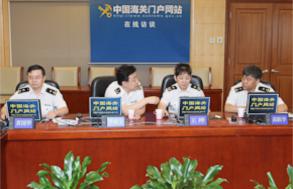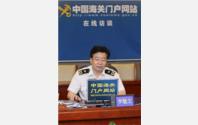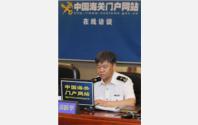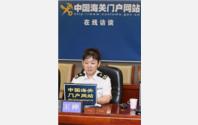 Online Interview
Online Interview
Topic: China Customs 20 Measures to Support Steady Foreign-Trade Growth
Time:10:30 AM (Fri) May 23, 2014
Special Guests:Li Kuiwen, Deputy Director General, GACC Department of Policy Research; Miao Yuexue, Deputy Director General, GACC Department of Customs Control and Inspection; Huang Guohua, Associate Counsel, GACC Department of Statistics
China Customs 20 Measures to Support Steady Foreign-Trade Growth
[Miao Yuexue]: I suppose all of you have noticed the fourteen items for innovation in supervision and service system introduced by the Shanghai Customs at the end of April, including declaration after entering the zone and self-transport within the zone and so forth. The innovative items involve various aspects such as clearance, supervision, tax levy and bond. After implementation, they will adapt better to rules of enterprises’ production and operation, help reduce operating costs and improve clearance efficiency. 05/23/2014 10:43:09
[Miao Yuexue]: For example, the mode of clearance after entering the Zone enables enterprises to shorten the time of transporting imported goods from the harbor district to the zone from average 2-3 days to half a day. Furthermore, it is roughly calculated that, by applying self-transport within the zone, a medium-sized company is able to reduce annually over RMB 200,000 of transportation costs in the circulation of goods within the four districts of the zone. 05/23/2014 10:44:25
[Miao Yuexue]: There is another good news. To magnify the effect of those innovative systems, GACC plans, from August, to make summary at different stages of pilots, and to popularize and carry out various institutional arrangements and reform measures at different layers proactively and prudently, in accordance with local conditions in a practical and efficient manner with risks under control, so as to unleash more “reform dividends” to benefit more enterprises. 05/23/2014 10:45:59
[Wang Hua]:Thanks a lot for your explanations, Mr. Miao. Mr. Li, besides the reform on supervision of the Free Trade Zone, you also mentioned other five reform measures. What exactly are they? 05/23/2014 10:46:25
[Li Kuiwen]: Presently, GACC focuses on six reforms and we have been speeding them up. With regard to the reform of regional clearance integration, the “declare at home, release at home” model has been expanded among enterprises from May 1. Last week, we announced the “Reform Scheme for Integrating Clearance in the Customs Districts of Beijing, Tianjin and Hebei Province”, whose central framework is to set up one center and four platforms, with an aim to realize the operation of integrated clearance. 05/23/2014 10:47:20
[Li Kuiwen]: This reform will be brought into force in Beijing and Tianjin customs districts from July 1. It is to be extended to Shijiazhuang Customs around October as scheduled so as to eventually realize the integration among Beijing, Tianjin and Hebei Province. We are also striving to expand the model to Yangtze River and Pearl River deltas within this year. 05/23/2014 10:48:12
[Wang Hua]: A large number of enterprises have enjoyed the benefits of these reforms. They feel along with the deepening of reforms, they are accessible to more “reform dividends”. 05/23/2014 10:48:33
[Li Kuiwen]: That’s right. With the model expanded from AA level enterprises to A level ones, the number of eligible enterprises increased from 2,948 to 33,540, making a substantial progress in terms of the coverage. 05/23/2014 10:49:05
[Li Kuiwen]: The total volume of import and export in Beijing, Tianjin and Hebei amounts to more than USD 610 billion, accounting for about 14.7 percent of the country’s total. After the clearance integration, enterprises in the three places can choose independently one of them to declare without any difference. And the time and transportation costs saved up will constitute an impressive number. 05/23/2014 10:49:33
[Li Kuiwen]:According to initial estimation, the time for clearance can be reduced by 20 to 30 percent, and transportation costs about 30 percent. The three places will be capable of creating a lot more economic and social benefits, and spending much less on clearance and management costs. 05/23/2014 10:53:58
Quick Links









